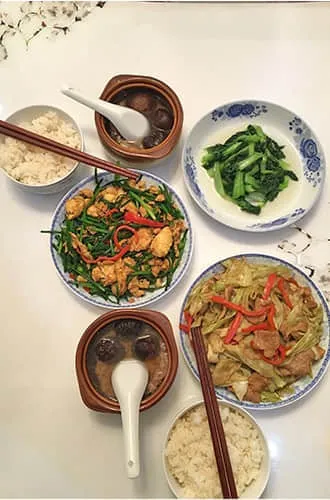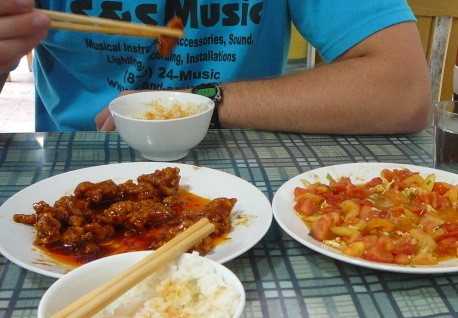20 Handy Facts To Food Guide to China Best Cities
Wiki Article
The Best Regional Cuisines To Try In China The Top 10 Tricks
1. Learn about the eight traditional Chinese cuisinesTip: Familiarize yourselves with the eight main Chinese dishes: Sichuan (Cantonese), Shandong (Jiangsu), Fujian (Fujian), Hunan (Anhui) and Zhejiang. Each one has its own distinct flavor, techniques, and dishes.Pro: It helps you plan your dining experiences based on your taste preferences.Con: It can be a challenge trying to remember the finer elements of each cuisine.
2. Take advantage of the local cuisineTip: Try signature dishes from the region you're in, like Peking Duck in Beijing, Xiaolongbao in Shanghai, or Hot Pot in Chengdu.Pro: A culturally rich authentic dining experience is guaranteed.Pro: It may hinder your exploration of different cuisines while in a specific area.
3. Pay Attention to Regional FlavorsTip: Sichuan dishes are spicy and numbing. Cantonese foods are light and fresh. Jiangsu food is sweet and delicate. You should choose dishes that suit your taste and tolerance to spice.It will help you not order food items that might not be your preference.Con Some flavor profiles need some experimentation in order to achieve.
4. Explore Street FoodYou can find unique street food in every city, such as Jianbing in Beijing (savory crepes), or Roujiamo in Xi'an (Chinese burgers). Try out some local snacks.Pro Street food is inexpensive convenient and provides an opportunity to see the daily life.Con: Hygiene can sometimes be a problem; select vendors that have a high turnover.
5. Learn Basic Dining EtiquetteTip: Learn about Chinese eating traditions, such as sharing meals in a family setting. Avoid sticking chopsticks in rice with the standing position.Pro This is a sign of respect for local customs and traditions, and can enhance your dining experience.Con: Took some time to adjust to the new surroundings.
6. Request local recommendationsTip: Locals often know the top restaurants or food in their area. Don't be afraid to ask assistance.Pro: Make sure you find hidden gems and stay clear of tourist traps.Con: Language barriers can cause problems with communication.
7. Be open to new flavorsUse your imagination to discover interesting ingredients in regional dishes. Approach new foods with curiosity.Pro: Increases your knowledge of Chinese culture by expanding your palate.Con: Certain meals might not meet your preferences or dietary preferences.
8. Food restrictions can be accommodatedTIP: You can make use of Mandarin phrases to express allergies or preferences. For instance, "Wo bu Chi Rou" (I do not take meat for dinner).Pro: It will ensure that you experience a more pleasant experience.Con: Certain dishes can be restricted in terms of certain food restrictions.
9. Serve regional beverages alongside your food.Drink local beverages like tea in Fujian or Baijiu in north China.Pro: It enhances and compliments the dining experience.Con Cons: Strong flavors like baijiu may not please everyone.
10. Avoid OverorderingA tip - Chinese dishes are served family-style. So, order with caution. If you require more, add it.Pro: Reduces food waste and guarantees that you are able to try a variety of foods.Cons: It could be tempting to buy too much due to the range of choices available.
Exploring regional cuisines is excellent way to get to know China.Enjoy a wide variety of tastes, techniques and ingredients.Cultural Insight: Gain greater understanding of the regional identity and customs.Affordability - Many local dishes are affordable.A memorable experience: The flavor of classic dishes at their original place creates memories that will last for a life time.Cons of Exploring Local Cuisines in ChinaHygiene Issues Certain restaurants and street food outlets may fail to meet international sanitation standards.Language barriers. Menus or explanations in Mandarin may hinder the ability to place orders.Unfamiliar Ingredients : Some people find certain flavors or textures difficult to digest.Some areas have strict dietary requirements for vegans, vegetarians and those who are allergic to certain foods.If you stick to these suggestions and are a little adventurous then you'll be able to explore the numerous delicious local Chinese cuisines while navigating the difficulties. Take a look at the top rated from street food to fine dining in China for website info including taste the regional flavors of China, regional Chinese cuisine highlights, taste the regional flavors of China, China culinary heritage, explore the best local eats in China, food guide to China best cities, regional Chinese cuisine highlights, China culinary hotspots, explore the best local eats in China, discover the tastes of China cities and more.

Top 10 Tips On Dining Manners And Etiquette Of Chinese.
1. Wait to Be Seated Tip: When dining in formal settings, you should wait until your host or server leads you to a seat. The seating arrangements show the hierarchy.Pro: Respects the host and their authority.Con When it comes to informal settings, it might not always be obvious who the host is which could lead to confusion.
2. Chopsticks: How to Use Them CorrectlyIf it appears you're performing a burial ritual, avoid sticking your chopsticks straight into the rice. Make use of chopstick holders, or lay them flat on top of the bowl or plate when not using them.Pro: Deters any intentional inconsideration.Con: Learning proper chopstick etiquette might take practice for beginners.
3. Respect eldersThe one with the most experience or age should be served first. They are often served first.Pro: Respects the family structure and social hierarchies.Con: This practice could be ignored or unnecessary in informal settings.
4. Share DishesTips: Chinese dining is communal where the dishes are being served in the middle for everyone to enjoy. Never take the last item unless you're given it.Pros: Encourages communities and experiences shared.Con: Sharing may restrict your food choices If you're picky.
5. Avoid Wasting FoodTIP: Eat as much as you can. Food left on the table can be considered disrespectful.Pro: Shows appreciation to the host.Con: Underestimating the size of your appetite can make it impossible to finish the meal.
6. Toast the right wayTo show respect, when toasting together with others Keep your glasses slightly lower than that of elders or other respected people.Pro: Shows respect for others.Con: Could be a challenge to remember in a large group with multiple toasts.
7. Don't flip fishTips A word of caution: In southern China, flipping an entire fish after eating just one side is considered bad luck, symbolizing an overturned boat.Pro: Prevents offending local myths and beliefs.Contra: This custom may not be applicable to northern China which could lead to mixed practices.
8. Both Slurping & Burping are fineA tip: Slurping on noodles or soups is seen as a signal of not rudeness, but more of joy. The chef may tolerate burping to show flattery.Relax and take in the meal without having to worry about Western ways of life.Cons: It could be uncomfortable if the idea isn't in line with your culture's norms.
9. Chopsticks Do not point at people with ChopsticksOnly use chopsticks for eating. Use them only for eating.Pros: It keeps the dining environment respectful.Con It's easy to ignore this principle during lively discussions.
10. It is important to know who pays the billIn China, it's common for hosts to demand that guests pay the amount. You may offer to pay, but you may encounter resistance.Pro: Shows appreciation for generosity.Cons: Being too insistent can make you appear fake.
There are many advantages for adhering to the dining rules in ChinaRespect for culture: Being respectful of local customs is a good method to establish connections with locals.Social Bonding: Observing traditions creates a sense of friendship and gratitude.Avoids Missteps: Proper etiquette helps you navigate unfamiliar dining situations smoothly.Participating in the traditional customs will enhance your journey experience.Cons of Following China Dining EtiquetteComplex Rules: For newcomers to the area, the sheer number of rules and regulations can be overwhelming.Regional Variations: Etiquette norms can differ between regions, causing potential confusion.Time-consuming: Attending formalities may hinder the beginning of your meal.Unfamiliar Gestures: Certain practices like correctly using chopsticks requires a lot of practice.Be aware of these guidelines and hints, you will be able to be able to navigate Chinese dining manners with confidence, creating a respectful and enjoyable experience for yourself and your hosts. Follow the top a deep dive into China food culture for site examples including China flavorful food culture, Chinese food you must try, taste the best dishes across China, explore the riChness of Chinese food, explore local Chinese cuisine, explore local Chinese cuisine, the flavors of Chinese cuisine, the flavors of Chinese cuisine, famous foods in China cities, explore diverse Chinese dishes and more.
